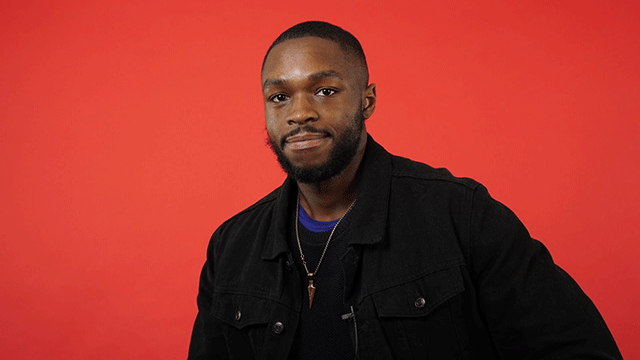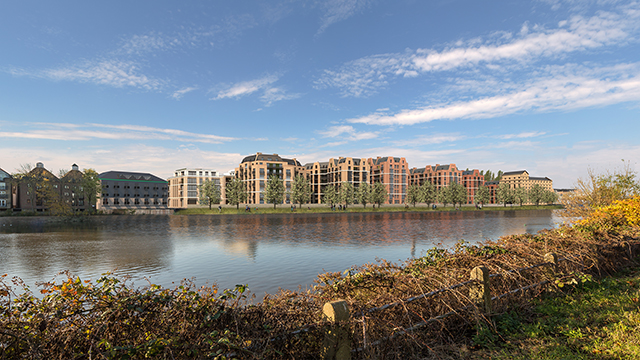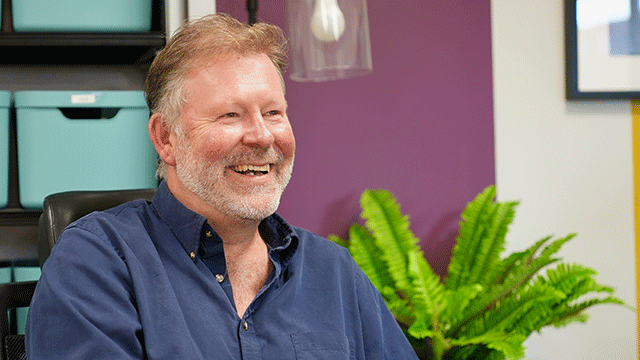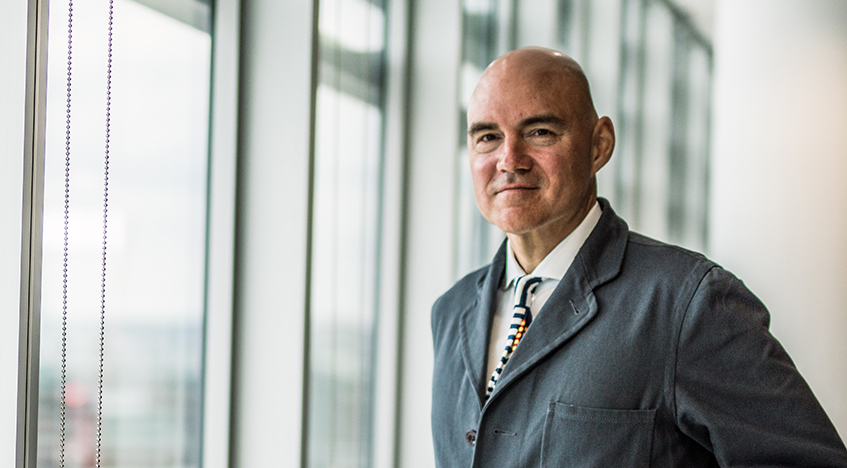“Connectivity is destiny.” It sounds more like the tagline of an epic Hollywood film trailer than the mantra of the Urban Land Institute’s new UK president.
But when that president is a global cities expert with ambitions to get the tech sector on side within the first few months of his two-year tenure, it starts to make sense. Not least because he is right. Connectivity, or rather technological advancement, is the future. And urban development won’t get far without it.
“There is no place that will grow that is not connected to other places that are growing,” says Aecom’s head of cities division Chris Choa, four days in to his role with the ULI. “And there is no group that will be at a disadvantage by being connected to other groups that are connected.
“Cities and urban spaces are powerful because they bring people together. They are not a thing, they are a system. They are networks. And technology focuses on the power of networks and systems.
“What I want to do over the next two years is broaden the membership base of the ULI. Not to make it larger but to make it more diverse than it already is and that includes working with the technology sector.”
This, he adds, is all part of a wider plan to harness AI and machine learning expertise that could better inform decisions around how and where infrastructure investment is spent in the urban realm.
And the time for the property sector to embrace technology on a city-wide scale is now. As news emerged in May of Google’s plans to build a hi-tech district of Toronto “from the internet up”, the gauntlet has well and truly been thrown down.
Tech giants are starting to take the future fabric of the urban realm into their own hands and the real estate industry needs to respond; preferably by stepping up to the plate with some advances of its own.
Either that or a collaboration; which is where New York-born Choa’s strategy back here in the UK comes into its own.
Bridging the gap
The first step will be boosting visibility. The ULI might have 40,000 members across the world, with a particularly strong foothold in the United States but he knows that he is trying to catch the attention of a distracted sector.
“The tech community is very concerned with the tech community at the moment,” he says, sitting in Aecom’s new Aldgate office looking out over the City skyline.
“I think that is one of the main reasons the ULI is still relatively unknown in that field. But as part of our infrastructure council we have hosted several events where we have brought in groups from the tech community to talk about issues that are common for tech and real estate, like the impact of driverless cars on cities.
“When we talk it is clear that the property and tech sectors are asking the same questions when it comes to the future of our cities.
“We use the same vocabulary; what is the character of the place? What is the architecture? Where are the intersections? How is the layering set up?
“Our brains work in the same way but, particularly on the real estate side, we are not yet benefitting from all of the advances that we are making in our profession because we are not fully embracing the tech that is out there to help us to understand how city systems work,” he adds.
Here he refers to tech systems that could help make decisions around urban planning priorities and uses infrastructure investment as an example.
“In every city there are questions around where you provide transport infrastructure,” he says. “Do you focus on areas that are already congested to ease the system or do you fund infrastructure in order to induce homes construction and urban development in places that are underserved?
“These are two very different philosophies and we are starting to realise that infrastructure needs to promote growth and balance benefits rather than just release congestion around places that are already settled.
“But how do you work out where to go and where to invest? This is an area where the tech sector has a lot of focus; on systems, networks and data, so it has a lot of strategy we can use when we plan infrastructure. We can use different ways of technology-enabled decision-making to decide where we invest first.”

However, Choa is quick to emphasise that this does not spell the end for developer involvement in city planning, design and construction – a timely concern given Google’s Toronto plan seemingly has no developer input.
And as well as getting the tech sector increasingly interested in working with property, he urges the real estate industry to embrace digital advances, rather than shy away from them.
Cities and urban spaces are powerful because they bring people together. They are not a thing, they are a system. They are networks. And technology focuses on the power of networks and systems.
“Cities are increasingly using algorithms to design and manage urban realm,” says Choa. “This doesn’t replace developers and local government. Data and analytics, integrated with emerging technology, creates new ways to better address the real-world needs of people.
“The real estate sector just needs to embrace the change. The way we design cities is very different now from how it was even a year ago.
“We use machine-learning platforms to help us figure out how urban grids come together with parametric modelling. Anybody in the property industry who is concerned with urban land should be interested in this kind of disruption; it’s a huge opportunity.”
Easing tensions
While Choa’s role at Aecom is global, his ULI post will see him focus on the UK over the next two years. And while many of his goals and priorities can be applied on a worldwide scale, he takes some time to set out his more local ambitions.
The first, he says, will be addressing tensions between urban centres and the hinterland.
“We keep trying to see nations as primary units of governance and progress,” he says. “But increasingly we are picking that apart and understanding there is actually a relationship between urban centres and their immediate hinterlands and we need to address the tensions between globalised cities in the same nation, like London vs Manchester and Birmingham.
“This all comes back to infrastructure: transportation, power, water networks. I want to focus on how the private sector can become engaged in the delivery of these things. These are ULI interests but they should also be professional interests.
“We live in a world where the people who pay for things and who finance things are not always the people who ultimately benefit. So trying to realign who finances infrastructure will be a key concern,” he says.
“I know the mayors of the major UK cities are struggling with this constant push and pull as we try to make investments in the next generation of infrastructure.
“How can mayors and the public sector encourage the private sector to take risks and invest in infrastructure that benefits the public? There needs to be policies around value capture and that is something that we will be focusing on here over the next two years.”
He adds that housing is, of course, a major issue. One that is particularly challenging in London, but also in major regional cities including Manchester and Birmingham.
The solution, he says, once again comes back to connectivity and infrastructure.
“You have to make cities attractive and, in particular, attractive to young people,” he says. “We know it is very difficult for people to find homes in the UK’s major global cities.
“In London alone there is a huge shortfall in housing and lack of construction and new starts. But we don’t have many places allowing a great deal of development. So where are those homes going to come up and how do you make them attractive enough for people to move there?
“Connectivity. Infrastructure. You can’t just build them in the middle of nowhere, you need to bind them into the system. You have to connect them to economic centres to allow them a possibility of developing and thriving.”
This, Choa adds, is partially linked to working with the tech sector to make use of the systems available to map successful urban development patterns.
However, there has to be willing. “Cities that cannot embrace change become vulnerable, particularly in our time,” he says. “A city that is too focused on maintaining its character as it might have been at some fixed point in history is vulnerable. Cities are not historical artefacts, they are agencies for change.”
To send feedback, e-mail emily.wright@egi.co.uk or tweet @EmilyW_9 or @estatesgazette











